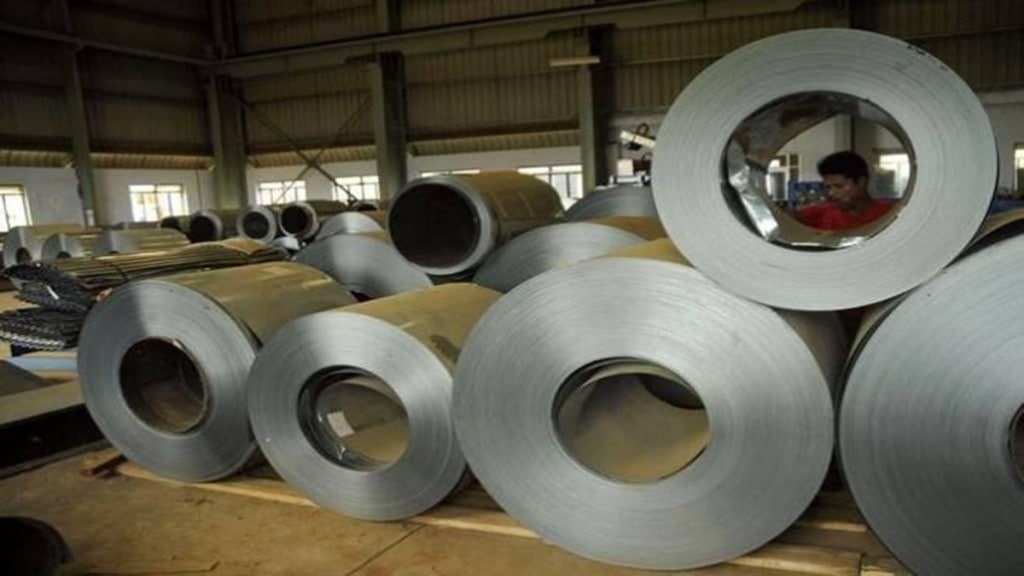Prices of key industrial metals such as copper, aluminium and zinc have soared in the last few months, reaching fresh multi-year highs, while gold and silver seem to have taken a temporary pause. Surya Sarathi Ray delves into the reasons for the sharp spike in prices.
Why have copper prices shot up?
Copper is a crucial component in manufacturing electric vehicles, power grids and wind turbines. A stubborn demand-supply gap amid a slew of disruptions in major mines has kept prices elevated for several years now. This month’s ban by the US and the UK on Russian supplies of aluminium, nickel, and copper to the London Metal Exchange (LME) has further fuelled the surge. On Monday, three-month copper prices on the LME reached $9993.30 per tonne, a two-year high. The outlook for the industry bellwether metal is bullish for the next three months. Sehul Bhatt, director-research at Crisil Market Intelligence and Analytics, said, “The market is in deficit… Yet we believe the recent price rally is ahead of market fundamentals because warehouse stocks on the Shanghai Futures Exchange reached a three-year high this month.”
What about aluminium?
Russia is an important metal producer, accounting for 3% of the global zinc supply, 6% aluminium, and 4% copper. These metals with solid fundamentals have already caught the fancy of international financial investors with ample liquidity. Though the LME ban does not prevent Russian metal producers from selling their products outside the US and the UK, it triggered upside support for aluminium. At the LME, aluminium soared 15.59% to $2669/tonne on Monday compared to a month ago.
“The ban imposed by the LME and the Chicago Mercantile Exchange on trades in aluminium, and the US move to bar imports have a significant impact. As of March 2024, more than 90% of aluminium stocks at LME are of Russian origin. This has resulted in a sudden uptick in aluminium prices,” Crisil’s Bhatt said.
Zinc’s the weakest performer
Zinc has been this year’s weakest base metal price performer. Prices on the LME are currently ruling at a one-year high but excess supplies are likely to drag down the prices further into the year. Further gains in zinc may by limited because it’s more closely linked with the real estate sector. The Australian Office of the Chief Economist (AOCE), in its “Resources and energy quarterly”, has said the outlook for zinc demand remains subdued due to slowing global growth and ongoing weakness in China’s property market. Research agency BMI, a unit of Fitch Solutions, has said refined zinc production growth will continue to rebound in 2024 following strong growth in 2023. Analysts say zinc prices are likely to touch the $3,000 per tonne mark in August-September from $2,852 per tonne now.
Have gold prices hit a wall?
After an extraordinary ascent in recent times, gold prices fell to a more than two-week low on Tuesday. Gold had dipped 2.7% on Monday, which was its biggest intra-day fall in 22 months. Earlier, gold had registered fresh highs in the domestic and international markets at `74,000/10 gram and $2,430 respectively.
Chintan Mehta, CEO of Abans Holdings, said, “The price of gold has seen a sharp correction as the conflict between Israel and Iran appears to de-escalate. Currently, we are noting support near `69,850. Gold might undergo a correction to around `69,000 on the downside, while on the upside, it could reach `72,250.”
Where is silver headed to?
Unlike gold, silver is not seen as a protector of wealth and higher prices can lead to a lot of profit booking. In an interview with CNBC TV18, Hindustan Zinc CEO Arun Mishra said the price of the precious metal is likely to cross $31-32 per troy ounce due to increased industrial demand and ongoing supply shortages, up from $28-29 per troy ounce now. Hindustan Zinc recently became the world’s third largest silver producer.
Outlook for 2024
In a co-authored blog earlier this year, Jeetendra Kahndan, senior economist with the World Bank’s Prospects group, said the World Bank’s Metal Price Index is likely to fall 5% in 2024, before stabilising in 2025. “Among various metals, the largest price decline is expected in nickel, followed by aluminium, tin, zinc, lead and copper. Prices are expected to inch up in 2025, with price increases ranging from 2% for lead to 9% for aluminium,” he said.
Indian domestic metal prices are linked to LME prices. While India is a net importer of copper, it is a net exporter of aluminium and zinc. For copper imports, an importer needs to pay freight and import duty.

